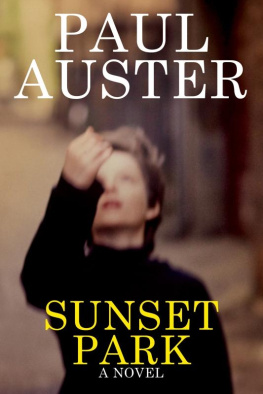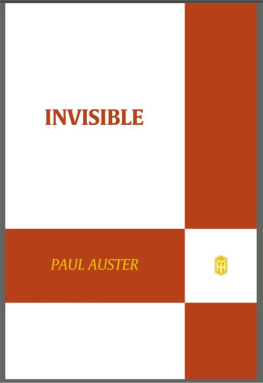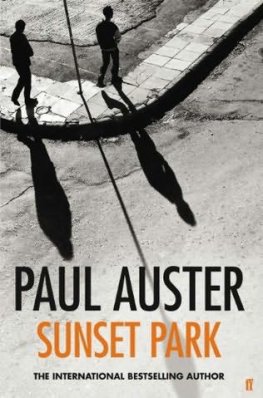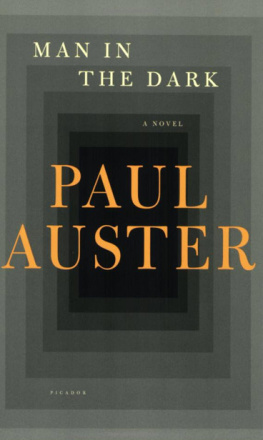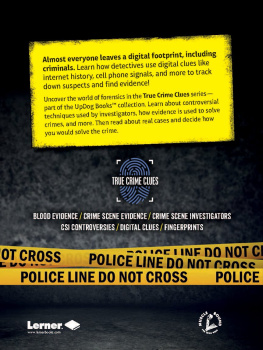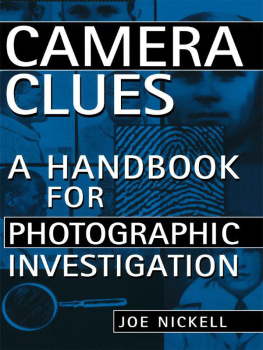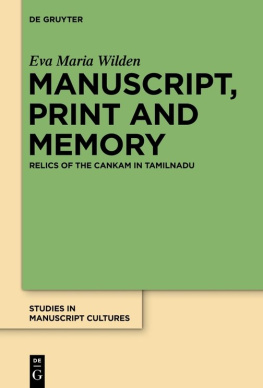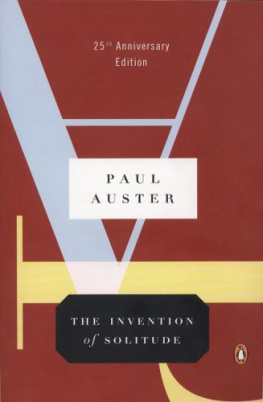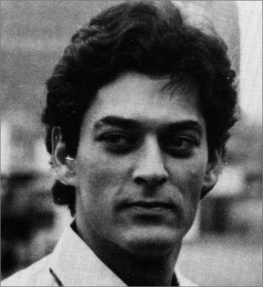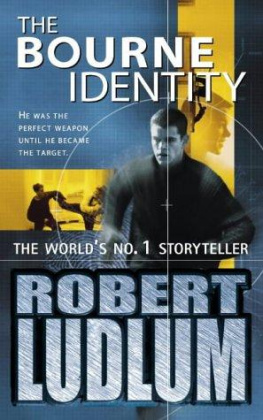Also by Paul Auster
Novels
The New York Trilogy (City of Glass Ghosts The Locked Room)
In the Country of Last Things Moon Palace The Music
of Chance Leviathan Mr. Vertigo Timbuktu The Book
of Illusions Oracle Night The Brooklyn Follies
Nonfiction
White Spaces The Invention of Solitude The Art of Hunger Why Write? Hand to Mouth The Red Notebook Collected Prose
Screenplays
3 Films: Smoke, Blue in the Face, Lulu on the Bridge
Poetry
Unearth Wall Writing Fragments from Cold Facing the Music Disappearances: Selected Poems Collected Poems
Illustrated Books
The Story of My Typewriter (with Sam Messer) Auggie Wren's
Christmas Story (with Isol) City of Glass (adapted by Paul Karasik
and David Mazzucchelli)
Editor
The Random House Book of Twentieth-Century French Poetry
I Thought My Father Was God and Other True Tales from NPR's
National Story Project Samuel Beckett: The Grove Centenary Edition
TRAVELS IN THE SCRIPTORIUM
TRAVELS
IN THE
SCRIPTORIUM
PAUL
AUSTER
Henry Holt and Company New York
Henry Holt and Company, LLC
Publishers since 1866
175 Fifth Avenue
New York, New York 10010
www.henryholt.com
Henry Holt is a registered trademark of Henry Holt and Company, LLC.
Copyright 2006 by Paul Auster
All rights reserved.
Distributed in Canada by H. B. Fenn and Company Ltd.
Library of Congress Cataloging-in-Publication Data
Auster, Paul, 1947-
Travels in the scriptorium / Paul Auster.1st ed.
p. cm.
Novel.
ISBN-13: 978-0-8050-8145-9
ISBN-10: 0-8050-8145-3
I. Title
PS3551.U77T73 2007
813'.54 dc22 2005055038
Henry Holt books are available for special promotions and
premiums. For details contact: Director, Special Markets.
First Edition 2007
Designed by Victoria Hartman
Printed in the United States of America
1 3 5 7 9 10 8 6 4 2
for Lloyd Hustvedt
(in memory)
TRAVELS IN THE SCRIPTORIUM
The old man sits on the edge of the narrow bed, palms spread out on his knees, head down, staring at the floor. He has no idea that a camera is planted in the ceiling directly above him. The shutter clicks silently once every second, producing eighty-six thousand four hundred still photos with each revolution of the earth. Even if he knew he was being watched, it wouldn't make any difference. His mind is elsewhere, stranded among the figments in his head as he searches for an answer to the question that haunts him.
Who is he? What is he doing here? When did he arrive and how long will he remain? With any luck, time will tell us all. For the moment, our only task is to study the pictures as attentively as we can and refrain from drawing any premature conclusions.
There are a number of objects in the room, and on each one a strip of white tape has been affixed to the surface, bearing a single word written out in block letters. On the bedside table, for example, the word is table. On the lamp, the word is LAMP. Even on the wall, which is not strictly speaking an object, there is a strip of tape that reads wall. The old man looks up for a moment, sees the wall, sees the strip of tape attached to the wall, and pronounces the word wall in a soft voice. What cannot be known at this point is whether he is reading the word on the strip of tape or simply referring to the wall itself. It could be that he has forgotten how to read but still recognizes things for what they are and can call them by their names, or, conversely, that he has lost the ability to recognize things for what they are but still knows how to read.
He is dressed in blue-and-yellow striped cotton pajamas, and his feet are encased in a pair of black leather slippers. It is unclear to him exactly where he is. In the room, yes, but in what building is the room located? In a house? In a hospital? In a prison? He can't remember how long he has been here or the nature of the circumstances that precipitated his removal to this place. Perhaps he has always been here; perhaps this is where he has lived since the day he was born. What he knows is that his heart is filled with an implacable sense of guilt. At the same time, he can't escape the feeling that he is the victim of a terrible injustice.
There is one window in the room, but the shade is drawn, and as far as he can remember he has not yet looked out of it. Likewise with the door and its white porcelain knob. Is he locked in, or is he free to come and go as he wishes? He has yet to investigate this matterfor, as stated in the first paragraph above, his mind is elsewhere, adrift in the past as he wanders among the phantom beings that clutter his head, struggling to answer the question that haunts him.
The pictures do not lie, but neither do they tell the whole story. They are merely a record of time passing, the outward evidence. The old man's age, for example, is difficult to determine from the slightly out-of-focus black-and-white images. The only fact that can be set down with any certainty is that he is not young, but the word old is a flexible term and can be used to describe a person anywhere between sixty and a hundred. We will therefore drop the epithet old man and henceforth refer to the person in the room as Mr. Blank. For the time being, no first name will be necessary.
Mr. Blank stands up from the bed at last, pauses briefly to steady his balance, and then shuffles over to the desk at the other end of the room. He feels tired, as if he has just woken from a fitful, too short night of sleep, and as the soles of his slippers scrape along the bare wood floor, he is reminded of the sound of sandpaper. Far off in the distance, beyond the room, beyond the building in which the room is located, he hears the faint cry of a birdperhaps a crow, perhaps a seagull, he can't tell which.
Mr. Blank lowers his body into the chair at the desk. It is an exceedingly comfortable chair, he decides, made of soft brown leather and equipped with broad armrests to accommodate his elbows and forearms, not to speak of an invisible spring mechanism that allows him to rock back and forth at will, which is precisely what he begins to do the moment he sits down. Rocking back and forth has a soothing effect on him, and as Mr. Blank continues to indulge in these pleasurable oscillations, he remembers the rocking horse that sat in his bedroom when he was a small boy, and then he begins to relive some of the imaginary journeys he used to take on that horse, whose name was Whitey and who, in the young Mr. Blank's mind, was not a wooden object adorned with white paint but a living being, a true horse.
After this brief excursion into his early boyhood, anguish rises up into Mr. Blank's throat again. He says out loud in a weary voice: I mustn't allow this to happen. Then he leans forward to examine the piles of papers and photographs stacked neatly on the surface of the mahogany desk. He takes hold of the pictures first, three dozen eight-by-ten black-and-white portraits of men and women of various ages and races. The photo on top shows a young woman in her early twenties. Her dark hair is cropped short, and there is an intense, troubled look in her eyes as she gazes into the lens. She is standing outdoors in some city, perhaps an Italian or French city, because she happens to be positioned in front of a medieval church, and because the woman is wearing a scarf and a woolen coat, it is safe to assume the picture was taken in winter. Mr. Blank stares into the eyes of the young woman and strains to remember who she is. After twenty seconds or so, he hears himself whisper a single word: Anna. A feeling of overpowering love washes through him. He wonders if Anna isn't someone he was once married to, or if, perhaps, he isn't looking at a picture of his daughter. An instant after thinking these thoughts, he is attacked by a fresh wave of guilt, and he knows that Anna is dead. Even worse, he suspects that he is responsible for her death. It might even be, he tells himself, that he was the person who killed her.
Next page

